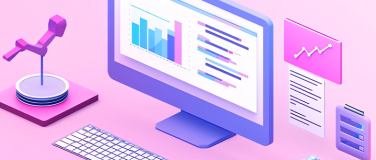API adoption is increasing, and it’s becoming imperative for organizations to not only be able to easily identify, access, and consume these APIs, but also seamlessly build different permutations and combinations of underlying data at scale and at speed.
This is where Anypoint DataGraph changes the game. Anypoint DataGraph helps organizations leverage GraphQL to unify and expose fields from a large number of APIs in a single request through an easy-to-use, no-code UI. This drastically increases development speed and agility by creating a “one-stop shop” for all frontend applications that need access to data from backend APIs.
Anypoint DataGraph was released for GA last year and had its first feature release in March 2022.
Anypoint DataGraph Feature Release
We are excited to announce the second feature release for Anypoint DataGraph, which gives developers even more flexibility in how they unify their APIs. The major highlights of the release include CLI Support and API extensions for DataGraph. To make troubleshooting easier, customers will now have the ability to download diagnostic data. Stay tuned for more capabilities because we have a packed 2022 roadmap ahead.
Anypoint CLI support
Not a big fan of GUIs? Consider yourself a CLI ninja? We hear you. That’s why we’re adding Anypoint CLI support for DataGraph with this release. This will enable developers to not only add and edit their source APIs, but also promote and delete APIs quickly directly through the command line.
Using CLI support, developers can automate the addition of new API sources and management of existing source APIs in DataGraph through their existing CI/CD pipelines. This will not only accelerate delivery, but also remove dependencies on backend teams for having to manually add new APIs to the unified schema through the DataGraph UI.
Non-mule developers can also use CLI support with their existing technology stack to build and manage their GraphQL implementations on DataGraph.
Check out our full list of DataGraph CLI commands.
API Extensions
To remove dependency on DataGraph GUI further, we’re adding API Extensions to source APIs. This can be used to give more context to the source APIs that are part of the unified schema.
Declarative text, i.e. annotations, can be used to show a DataGraph link from the properties of one type in one API spec to another type in a different API spec (both have to be part of the DataGraph). Extensions or annotations can also be used to define hidden fields in the DataGraph or if any property type should be displayed with a DataGraph-specific name.
Having the source API specs annotated with appropriate dependencies defining necessary relationships will also enable reproducibility of the DataGraph and foster reuse. As the network of source API increases, developers won’t need to remember all the links and merges needed between the source APIs to recreate the GraphQL endpoint or go through multiple clicks on the GUI to build the relationships between source APIs. That information would be easily referenced through the source API specs.
Learn more about all types of Anypoint DataGraph Extensions.
Diagnostic Data
To make it easy for customers to recreate their GraphQL implementations, we are adding capability to download the unified schema through the DataGraph GUI as a .graphl file. The .graphl file will have a complete record of the DataGraph implementation, including all the deployed API sources, and can be used to revert to a previous version of the schema if needed.
To troubleshoot errors and optimize DataGraph performance, developers can currently trace API queries and get detailed metrics on response times and SLAs, but this information can not be downloaded. With this release, we are giving customers the ability to download their diagnostic data as a JSON file. This will give easy offline access to important details, like how the datagraph has been set up, any logged errors, and issues and can be used in communications with the product and support teams, saving hours of back-and-forth.
Read more about the Anypoint DataGraph release, and join us at MuleSoft CONNECT on June 29, 2022 to learn even more!









